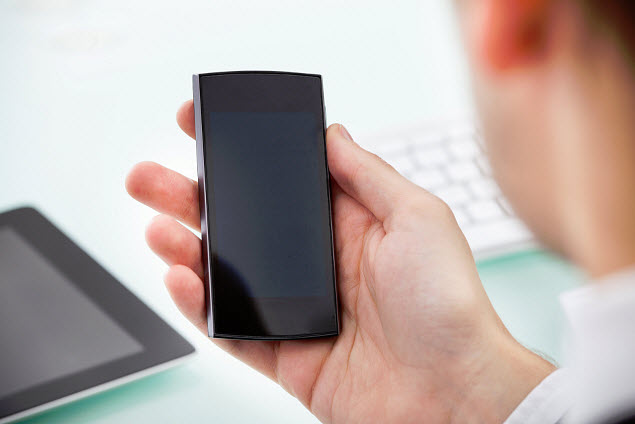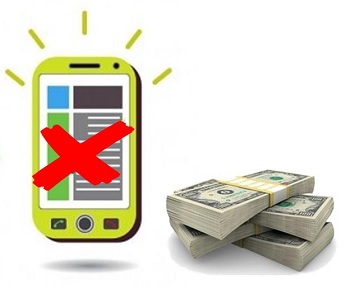A recent study has revealed that these programs are leading gadgets to be wiped as a regular practice.
According to the Fiberlink division at IBM, and a recent data analysis that they have conducted, one of the biggest smartphone trends in BYOD programs is to remotely wipe mobile devices.
This feature is proving itself to be exceptionally popular among enterprise clients who run these programs.
The figures from Fiberlink have shown that among the users of the MaaS360 cloud platform, there are currently an average of 450 mobile devices that are being wiped on a daily basis. This makes the practice a considerable one among smartphone trends in businesses. This platform is based in Pennsylvania and is used for the management of millions of cell phones and other gadgets in enterprises worldwide.
Among smartphone trends in the enterprise community, this has become a sizeable one across all of its verticals.
 What the data analysis showed was that while there are many different Mobile Device Management (MDM) features available through the MaaS360, it is the device wiping that has seen some of the largest growth across all of its verticals.
What the data analysis showed was that while there are many different Mobile Device Management (MDM) features available through the MaaS360, it is the device wiping that has seen some of the largest growth across all of its verticals.
For every three minutes of the day, enterprises are now wiping another device. This means that in the average day, 450 smartphones and tablets are wiped, which represents a massive 130,000 in the last year. Moreover, Fiberlink pointed out that this represents the equivalent of between 10 and 20 percent of the total average device fleet for the firm in the last year.
What the firm means when it says that a “wipe” has been conducted, is either of two different activities. The first is a complete wipe, which was the case in about one of every three gadgets that were wiped. The second is a partial wipe, which is made up by the other two out of every three mobile devices.
The smartphone trends showed that approximately half of these remote wipes by businesses occur automatically while the other half is specifically initiated by an administrator. Among the top reasons given for the automatic wiping, the lead was that the gadget has become “jailbroken” (which has to do with Apple smartphones and tablets), as opposed to being lost or stolen.
The results of a survey conducted by Sage North America showed this is the case despite perceived value.
Sage North America has revealed the results of its most recent Sage SMB Survey on Mobile Devices, which included findings on a number of different industries and sectors that see potential value in mobile technology, but that do not set an annual budget to meet those needs.
Among the sectors included in this survey were food and beverage, manufacturing and distribution, and construction.
Those specific industry sectors felt that mobile technology could be overwhelmingly positive in terms of the impact that it has on business, but the vast majority of companies in these areas only purchase solutions in this category as the need arises, instead of setting an annual budget for this tech. According to the Sage North America executive vice president and general manager of mid-market solutions, Joe Langner, “With more than 40 percent reporting that they have a BYOD (bring your own device) policy in place, employers in all three industries may not see the need to budget for mobile since BYOD helps ensure that expenses are relatively small.”
At the same time the survey results still suggested that it is worthwhile for companies to plan for mobile technology.
 Langner stated that it is evident that businesses are seeing the gains in productivity, which indicates that regardless of whether the tech is used as a part of an official BYOD (bring your own device) policy or for a specific item, this type of planning is worthwhile.
Langner stated that it is evident that businesses are seeing the gains in productivity, which indicates that regardless of whether the tech is used as a part of an official BYOD (bring your own device) policy or for a specific item, this type of planning is worthwhile.
In manufacturing and distribution, the survey showed that 74 percent of companies are not creating a budget for these devices or mobile apps. That said 51 percent of those companies do actually use mobile devices as they have perceived their benefits. Among those, 76 percent have at least one employee that uses a laptop, 74 percent has at least one employee that uses a smartphone, and 49 percent have at least one employee that uses a tablet.
In construction, 77 percent of companies said that smartphones provided a positive impact on the productivity of their organization, though under 14 percent had a budget for the hardware or software.
Food and beverage saw the most positive impact of mobile technology in their customer service (73 percent). Among the respondents, one pointed out that these devices help to “answer questions even when we are not in the office.”
 What the data analysis showed was that while there are many different Mobile Device Management (MDM) features available through the MaaS360, it is the device wiping that has seen some of the largest growth across all of its verticals.
What the data analysis showed was that while there are many different Mobile Device Management (MDM) features available through the MaaS360, it is the device wiping that has seen some of the largest growth across all of its verticals.
 Langner stated that it is evident that businesses are seeing the gains in productivity, which indicates that regardless of whether the tech is used as a part of an official BYOD (bring your own device) policy or for a specific item, this type of planning is worthwhile.
Langner stated that it is evident that businesses are seeing the gains in productivity, which indicates that regardless of whether the tech is used as a part of an official BYOD (bring your own device) policy or for a specific item, this type of planning is worthwhile.